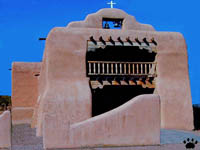
Santa Rosa de Lima church, c. 1737, Abiqui.
The Old New Mexico - part 3
In the second half of the 16th century, Spanish conquistadors
and missionaries began to explore the present-day New Mexico in search of the
legendary Seven Cities of Gold.

Cathedral of St. Francis de Assisi, c. 1886, Santa Fe. |

The oldest European-built street in the mainland USA, Santa Fe. |
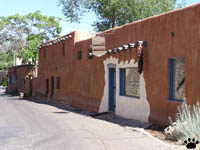
The oldest European-built residential building
in North America north of Mexico, c. 1650. |
In 1610, they established Santa Fe, today the
only city in the USA with really interesting architecture. Its beautiful adaptation
of the traditional Pueblo Indians' adobe style is now a cliche throughout the
American Southwest. |

San Miguel Mission, the oldest church
in the USA, c. 1610, Santa Fe. |

Street in Santa Fe, 18th century. |
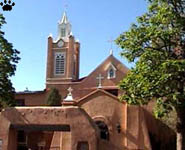
San Felipe de Neri church, c. 1793,
Albuquerque. |

Hotel, 20th century, Santa Fe. |
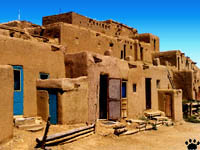
One of the two communal houses inhabited
since approximately 1500 AD, Taos Pueblo. |
Soon, the Spanish invaders enslaved and partially
converted the Pueblo Indians, residents of centuries-old agricultural villages
along the Rio Grande and its tributaries. |
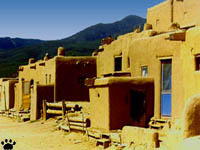
The second communal house,
Taos Pueblo. |

Acoma Pueblo was built on a rocky mesa in an attempt to avoid
frequent raids by Apache and Navajo Indians. |
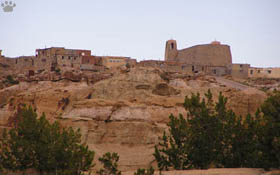
Nowadays, Acoma Pueblo is also known under its "touristic"
name,
Sky City. |
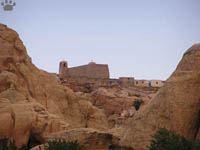
San Esteban del Rey Mission, c. 1629,
Acoma Pueblo. |
In Acoma Pueblo, people were forced to haul huge
timbers and tons of dirt for many miles across the desert, then up a steep rock
cliff, to built a colossal San Esteban church on top of an almost inaccessible
rocky mesa. |
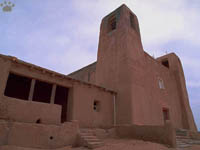
San Esteban del Rey Mission, c. 1629,
Acoma Pueblo. |
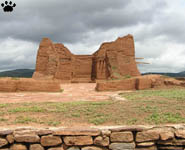
Nuestra Senora de Los Angeles mission,
c. 1710, Pecos Nat'l Historic Park. |
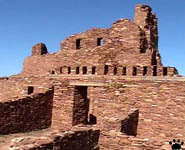
Abo Mission, c. 1620-1670,
Salinas Missions Nat'l Monument. |
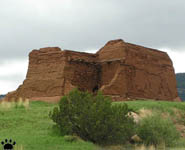
Nuestra Senora de Los Angeles mission,
c. 1710, Pecos Nat'l Historic Park. |

Kiva in the churchyard of Abo Mission, built in
the 17th century with the priest's permission. |
Not all priests were that cruel: some even allowed
the Indians to build kivas inside churchyards to ease the religious transition.
Nevertheless, many of Catholic missions were destroyed during the 1680 Pueblo
Revolt or later. |
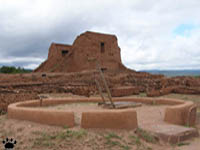
Kiva at Pecos, built after the Pueblo
Revolt as a sign of defiance. |
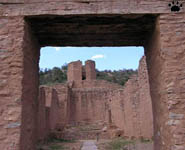
San Jose church, Jemes Mission. |
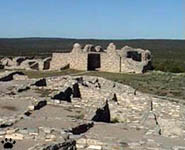
Gran Quivira Mission, c. 1600-1670,
Salinas Missions Nat'l Monument. |
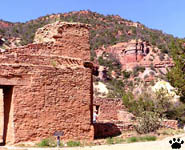
San Jose church, Jemes Mission. |
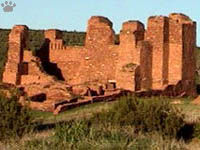
Quarai Mission, c. 1600-1670,
Salinas Missions Nat'l Monument. |
Some missions collapsed as many pueblos were abandoned
following disease outbreaks or raids by nomadic tribes.

Roadrunner, Abo Mission. |
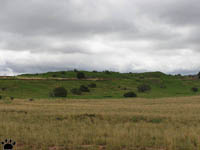
Site of abandoned Pecos Pueblo, Pecos Nat'l
Historic Park. |
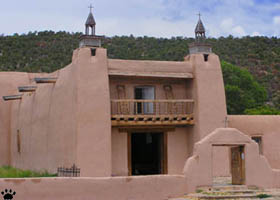
San Jose de Las Trampas church, c. 1760, near Santa Fe. |
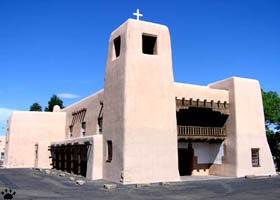
Christo Rey church, c. 1860, near Santa Fe. |
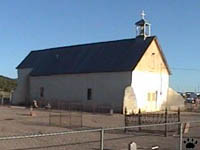
San Vicente de Paul church, c. 1878,
Punta de Agua. |
In 1692, the Spanish re-conquered New
Mexico. They suppressed two more revolts, and built many beautiful missions and
churches. This time their rule was more civilized, but Indian population continued
to decline. |

San Ysidro church, c. 1868,
San Isydro. |

Santuario de Chimayo, c. 1814,
Chimayo. |
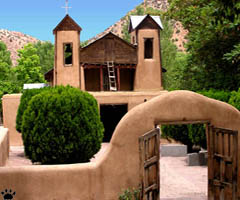
Santuario de Chimayo, c. 1814,
Chimayo. |
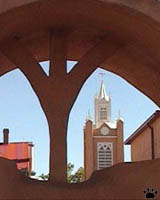
San Felipe de Neri church,
c. 1793, Albuquerque. |
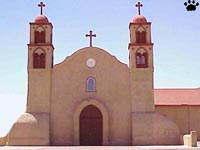
San Miguel mission, c. 1816, Socorro. |
Some of those missions
and churches are still revered by New Mexican Catholics, especially Santuario
de Chimayo near Santa Fe and San Miguel Mission in Socorro. |

Christmas lights at San Miguel mission. |
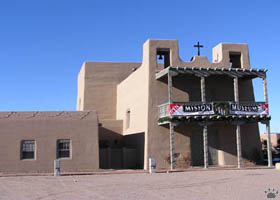
San Miguel mission, c. 1980, Espanola. |
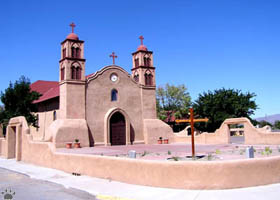
San Miguel mission, c. 1816, Socorro. |
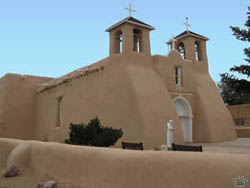
San Fransisco de Asis church, c. 1805, Rancho de Taos. |
San Fransisco de Asis church near Taos
(below) is also a popular tourist attraction. |

San Fransisco de Asis church, c. 1805, Rancho de Taos. |
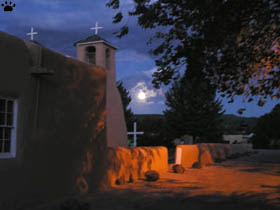
Full moon over San Fransisco de Asis church. |
Part 4
Back to Part 2
Home
|